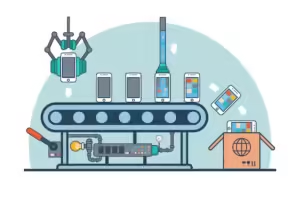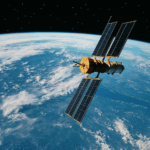Ultra-wideband (UWB) technology stands at the forefront of wireless communication, promising a paradigm shift in precision and efficiency. Unlike traditional wireless technologies, which operate within narrow frequency bands, UWB utilizes a broad spectrum to transmit data over short distances with exceptional accuracy.
This technology has rapidly gained traction across various industries, from healthcare to automotive, unlocking new possibilities in localization, data transfer, and sensor networks.
In this overview, we delve into the mechanics, applications, and advantages of UWB, while also exploring the challenges and future prospects that lie ahead.
The Mechanics of UWB:
Ultra-wideband (UWB) technology operates by transmitting short pulses of radio frequency energy across a wide spectrum of frequencies. Unlike traditional wireless communication methods that utilize specific frequency bands, UWB spreads its signal across a broad range, typically spanning several gigahertz.
This unique approach enables UWB to achieve high data rates and precise positioning capabilities while consuming minimal power.
At the core of UWB’s mechanics is its use of extremely short-duration pulses, often on the order of picoseconds to nanoseconds. These pulses are transmitted sporadically, allowing UWB devices to operate without causing significant interference to other wireless systems sharing the same frequency spectrum.
Additionally, the brief duration of these pulses enables UWB signals to coexist alongside other wireless technologies without causing significant interference, making it an attractive option for crowded wireless environments.
The key principle behind UWB’s effectiveness lies in its ability to exploit the properties of time and frequency. By spreading its signal across a wide frequency band and precisely controlling the timing of its pulses, UWB can achieve remarkable accuracy in both distance measurement and data transmission. This capability makes UWB well-suited for applications requiring precise positioning, such as indoor navigation, asset tracking, and proximity sensing.
Furthermore, UWB’s reliance on short-duration pulses enables it to achieve high immunity to multipath interference, a common challenge in wireless communication environments where signals reflect off surfaces and arrive at the receiver from multiple paths.
By transmitting pulses with such short durations, UWB signals can be easily distinguished from reflections, allowing for more reliable and accurate communication.
Applications of UWB:
Now that we’ve got a grasp on how Ultra-Wideband (UWB) technology works its wonders, let’s dive into the exciting world of its applications. UWB isn’t just a one-trick pony; it’s more like a Swiss Army knife of wireless tech, with each blade serving a unique purpose. Here are some cool ways UWB is shaking things up:
- Precision Ranging and Localization:
- UWB’s ability to measure distances with incredible accuracy makes it a superstar in applications where knowing exactly where things are is crucial.
- Imagine walking into a massive warehouse and being able to pinpoint the exact location of every item on your inventory list, down to the centimeter.
- That’s the kind of precision UWB brings to the table, making it indispensable for indoor navigation, asset tracking, and even augmented reality experiences.
- High-Speed Data Transfer:
- Need to transfer a boatload of data in the blink of an eye? UWB’s got your back. Thanks to its wide bandwidth and fast pulse rates, UWB can shoot data across the room at mind-boggling speeds.
- Whether you’re streaming high-definition video, sharing files between devices, or syncing up your smart home gadgets, UWB makes it happen in a flash.
- IoT and Sensor Networks:
- In the era of the Internet of Things (IoT), where everything from your toaster to your thermostat is getting smart, UWB plays a key role in keeping the conversation flowing.
- Its low power consumption, combined with its ability to precisely locate devices, makes UWB the go-to choice for building robust sensor networks.
- Whether it’s monitoring environmental conditions, tracking inventory in retail stores, or keeping tabs on patient vital signs in healthcare settings, UWB-enabled sensors are paving the way for a smarter, more connected world.
- Automotive Radar and Collision Avoidance Systems:
- When it comes to staying safe on the road, UWB is like having an extra set of eyes (or several) watching out for you.
- In automotive applications, UWB radar systems can detect nearby vehicles, pedestrians, and obstacles with unparalleled accuracy, helping drivers avoid collisions and navigate tricky traffic situations with confidence.
- From adaptive cruise control to emergency braking systems, UWB technology is revolutionizing how we drive – and keeping us safer in the process.
Conclusion:
In conclusion, Ultra-Wideband (UWB) technology represents a transformative force in wireless communication. With its precision ranging, high-speed data transfer, and diverse applications from IoT to automotive safety, UWB is reshaping industries and driving innovation. While challenges remain, the potential for UWB to revolutionize our interconnected world is immense. As we continue to explore its capabilities and address hurdles, let’s embrace the power of UWB to unlock new possibilities and shape the future of wireless technology.












